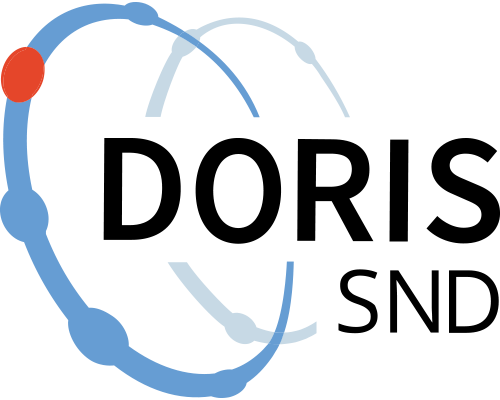Data from AUV Ran missions during Nathaniel B. Palmer cruise NBP2202
https://doi.org/10.5878/349w-b176
Files CTD_NBP2202_***.txt
Post processed data from the SeaBird sensor packages.
Data fields:
Time (Matlab time) - Time (UTC) as serial date number in Matlab convention (where 01-Jan-1900 00:00:00 is 693962.0)
Pressure (dBar)
Latitude
Longitude
Absolute Salinity (g/kg) calculated according to http://www.teos-10.orgOpens in a new tab
Conservative temperature (degrees) calculated according to http://www.teos-10.orgOpens in a new tab
Dissolved Oxygen (ml/l)
Meltwater Fraction (dimensionless), calculated according to Wåhlin et al, 2024
Instrument:
Dual packages consisting of one SBE19plus, one SBE43, and one pump (SBE5T) operating simultaneously. The packages had separated tubing systems but with inlets close to each other.
The following are the serial numbers of the sensors:
Port: SBE19plus, serial number: 19-7869, no SBE43 mounted
Starboard: SBE19plus, serial number: 19-7880 and SBE43, serial number: 0081
The SBE43 had the following calibration coefficients: Soc = 0.5418; Voffset = -0.4828; Tau = 1.14; A = -4.1263e-003; B = 1.3268e-004; C = -2.1621e-006; Enom = 0.036;
Post processing:
The following post processing was done to the raw data:
1) General check of data, removal of data while the vehicle was still in air. The pump for the port sensor had a bad cable. Since there was no growing offset we discarded all port data and only post processed the starboard data.
2) Spike removal using the following low pass filter:
[b,a] = butter(5,0.1,'low');
The following were the spike size limits: Temperature: 0.1; Salinity 0.01 and dissolved oxygen: 0.1.
3) Bin average to 1 Hz from the 4 Hz raw data
4) Offset adjustment based on the post-cruise calibrated ship CTD data (https://www.usap-dc.org/view/project/p0010249Opens in a new tab). These offsets were +0.026 mS/cm for conductivity, +0.0002 oC for temperature, and 0.22 ml/l for dissolved oxygen.
Files NBP2202_**_10m.txt
Ice draft (i.e. depth of the ice-ocean interface) as identified from the EM2040CX multibeam with serial number 2105. The instrument was mounted looking upwards, and operated at 300 kHz frequency. Data of quality higher than 13 was read into Eiva Navimodel Producer and gridded at 10 m grid. The data fields are:
latitude (decimal degrees),
longitude (decimal degrees)
ice draft (m)
Files NBP2202_**_2m.txt
Ice draft (i.e. depth of the ice-ocean interface) as identified from the EM2040CX multibeam with serial number 2105. The instrument was mounted looking upwards, and operated at 300 kHz frequency. Data of quality higher than 13 was read into Eiva Navimodel Producer and gridded at 2 m grid. The data fields are
latitude (decimal degrees)
longitude (decimal degrees)
ice draft (m)
Files NBP2202_**_1m.txt
Ice draft (i.e. depth of the ice-ocean interface) as identified from the EM2040CX multibeam with serial number 2105. The instrument was mounted looking upwards, and operated at 300 kHz frequency. Data of quality higher than 13 was read into Eiva Navimodel Producer and gridded at 1 m grid. The data fields are
latitude (decimal degrees)
longitude (decimal degrees)
ice draft (m)
File CTD_PostProcessed.txt
Temperature, salinity and depth from a SBE49 CTD cast through a hot-water borehole at 74° 22' 12.5328" S, 112° 32' 26.2782" W (74.370062 S, 112.540718 W). A Seabird SBE49 (SN 0219) FastCAT CTD profiler was mounted on a purpose-built deployment frame and attached to a winch cable with a mechanical termination and an electrical termination for live data collection. A downward and upward cast of temperature and salinity with pressure was made at 14:46 UTC on 7 Feb 2022, sampling at a rate of 16 Hz. Data collection took about an hour each way. The CTD spent a couple of minutes at the seabed (1226 dB, recorded by an RBRsolo), which introduced artifacts in the salinity observations during the upcast. The data were filtered, aligned in time, and averaged into 0.05 m vertical bins using the Seabird processing routines version 7.26.7.129Opens in a new tab. No thermal mass corrections were applied. The data were calibrated with CTD data from the RV/IB Nathaniel B. Palmer and CTD data from the AUV, and conductivity was shifted by +0.015 mS/cm. The manufacturer-stated accuracy of the temperature and conductivity sensors are ±0.002 °C and ±0.0003 S m−1, respectively.
Data fields:
pressure (dB)
Conservative temperature (deg)
Absolute salinity (g/kg)
File dotson_cast_downcast.cnv
Raw data of the drill site CTD
Data fields:
Pressure (dB)
Conductivity (mS/cm)
Temperature (in situ, oC)
Scan (count)
Flag
Data files
Data files
Documentation files
Documentation files
Citation and access
Citation and access
Data access level:
Creator/Principal investigator(s):
- Anders Sjövall - Ocean Infinity - Ocean Infinity
- Mark Symons - Ocean Infinity - Ocean Infinity
Research principal:
Principal's reference number:
- NBP2202
Data contains personal data:
No
Citation:
Language:
Method and outcome
Method and outcome
Geographic coverage
Geographic coverage
Administrative information
Administrative information
Topic and keywords
Topic and keywords
Relations
Relations
Publications
Publications
Versions
Versions
Metadata
Metadata
Versions
Versions
